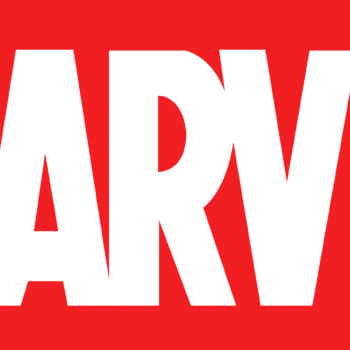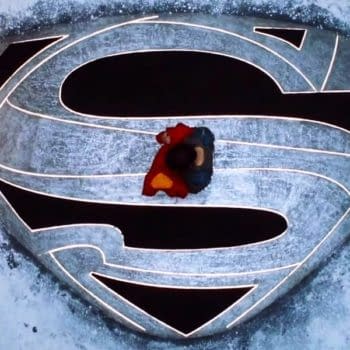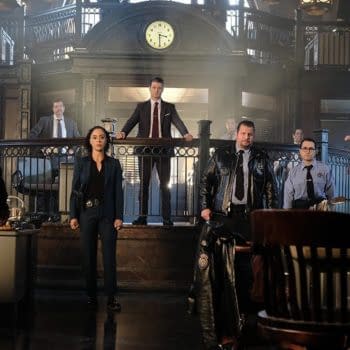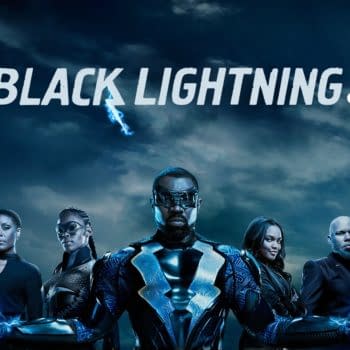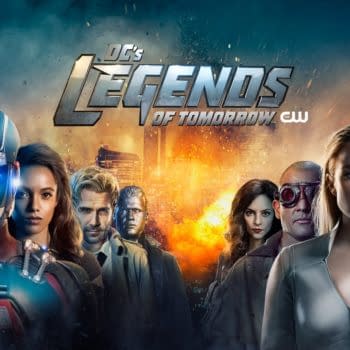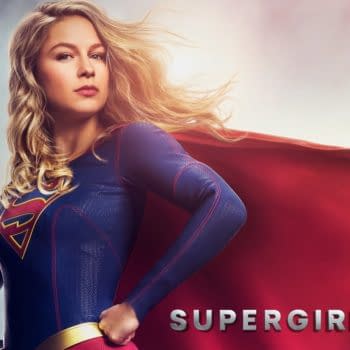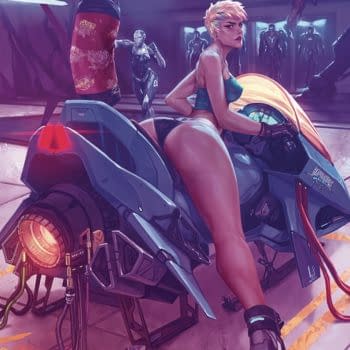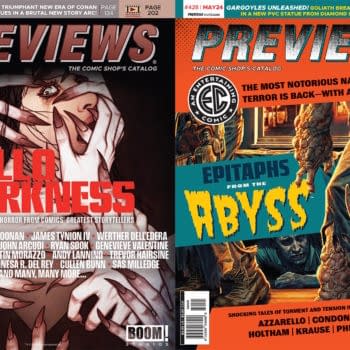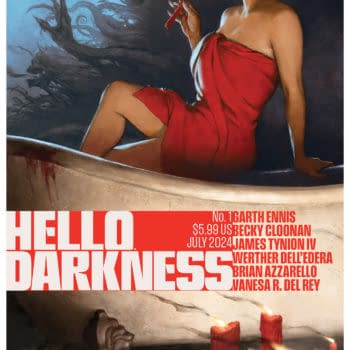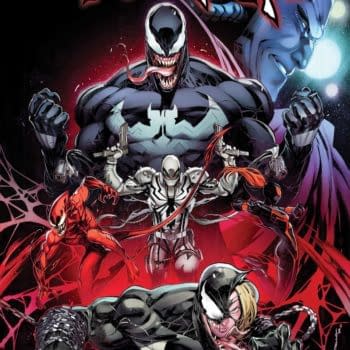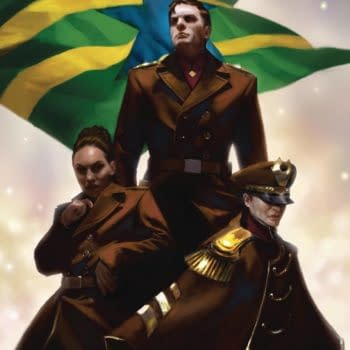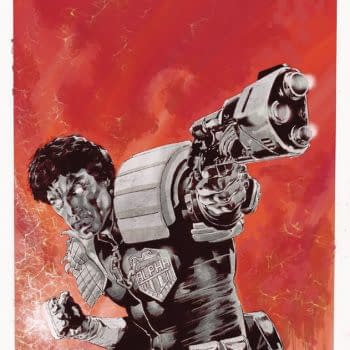Posted in: Comics | Tagged: Aaron Gillespie, Deja Thoris, Dynamite Entertainment, edgar rice burroughs, john carter, robert napton
Robert Napton Talks Deja Thoris, Edgar Rice Burroughs, Time Travel And Being A Process Junkie
Robert Napton is playing with one the toys of a legend. He's writing Dejah Thoris, the female warrior from Edgar Rice Burroughs Warlord Of Mars series. Aaron Gillespie spoke to Napton about writing time-travel, Burroughs work and being a process junkie.
AARON GILLESPIE: I see there is some time traveling in store for Dejah Thoris. Is there an extra level of preparation that goes into that kind of storyline?
ROBERT NAPTON: Glad you asked, thanks. Yes, Dejah Thoris #31 and #32, the first of which is out this week, are a time travel story that picks up on some elements I introduced in another Mars book, Warriors of Mars. In that story I depicted a time 1000 years in the future where things had dramatically changed on Mars. There are new enemies and new allies. I really had a desire to return to that storyline so I figured out a way to make it work for Dejah Thoris to visit that same future. The Dejah story did take a bit more preparation and thinking because Dejah experiences things in the future that could change everything for her and Barsoom, so it was fun to confront those paradoxes. I'm really excited about how it all came together.
AG: You have written many many stories in the same setting. What draws you towards Mars?
RN: Edgar Rice Burroughs created such an imaginative world when he conceived of Barsoom in the original trilogy. There are so many races, creatures, and regions on the planet that the story possibilities seem endless. These "planetary romances" as they were called back in the day were so influential — things like Dune, Star Wars, and Avatar all owe something to the Mars books. I discovered the books when I was around 13 years old and the interest never left me, so when given the opportunity to write the comics years later, I really jumped at the chance and I've been fortunate to be able to write stories in various times and places on Mars. The Fall of Barsoom was a prequel series about the Ancient Martian people and how they fell and gave rise to the world of John Carter's time. Warriors of Mars showed a meeting between John Carter and Edwin Arnold's Gullivar Jones of Mars, another human who found himself on the Red planet, so the diverse stories I've been able to tell have really kept it interesting for me.
AG: After working in this setting and with these characters for so long, do you feel like you have a complete grasp on the subject matter? Or do these characters still surprise you?
RN: With the Dejah Thoris series especially we are showing a "younger" Dejah than the one in the Warlord of Mars comic — though because of the long Martian life span (upwards of a 1000 years) "young" is a relative term. But because she is younger and it's hundreds of years before she meets John Carter, we have a chance to reveal a lot about her that we didn't know before and show a more reckless, impulsive Dejah Thoris who is trying to figure herself out, so that creates a lot of opportunities for surprises for me and the readers. There's a new storyline upcoming, after the time travel story, where things get really personal for Dejah Thoris in a way we haven't seen before. Because she's the original scantily-clad beauty of Science Fiction, some underestimate Dejah Thoris, but there's a great character along with the lovely curves.
AG: What single issue of Dejah Thoris are you most proud of? Why do you feel that way?
RN: I mentioned it earlier, but issue #31 and #32, the current time travel story, are my favorites, and I know you asked for a single issue, but I really think of them as a single issue. Carlos Rafael did some amazing line work, so those just came together really well. I think on a character level that story shows Dejah being forced to grow up a bit and deal with things she's never had to deal with before, so it has some of those character surprises we talked about.
AG: I'm a bit of a "process junkie." Can you describe your process? How tightly do you plot your stories?
RN: I do a sort of hybrid style. When I write out the plot I break down each comic page by panel so its almost like a full script, but then I receive the artwork and once I see the pages I finalize the dialogue for lettering. The plots are tight in the sense that I break it down by comic pages and panels, but I don't get too wordy in panel descriptions. I use a lot of photo reference if I need to explain something very specific to the artist. Then when the pages come back I like to just focus on dialogue. I find it makes things more spontaneous to do it in two parts that way. A great example is from Dejah #32, the second part of the time travel story. Dejah has an important moment with a new character and when I plotted it out I imagined the conversation going one way and had given some notes on facial emotion as I always do, but when I saw the way Carlos had drawn some of the expressions, it gave me an idea to introduce a new plot beat that fit the scene perfectly, so that's something that came out of scripting the dialogue with the comic art in front of me that I might not have otherwise discovered. The artist is the actor among other things, so it can be a great back and forth.
AG: How much leeway do you give your artist? Do you like to have input on how a character/prop/location/etc is going to look or do you prefer to let the artist run with it?
RN: I work with two talented artists on this book: Carlos Rafael and Deborah Carita. If I have a specific idea about how something should look I usually just imbed photo reference in the script or write a short, but detailed description and see what they come back with. They are both great at designing characters and costumes and creatures, so usually what I get back far exceeds my expectations.
More about Deja Thoris #31 can be seen here.
Aaron Gillespie is an Iowa based cartoonist whose first published work was way back in 1997 in an issue of Kilroy Is Here for Caliber comics. Since then he has worked on Hell Yeah, Golly, and Screamland from Image comics, Brian Buccellatto's Foster Anthology, Negative Burn and 13 Steps from Desperado, and many other companies. Somewhere in there he took a few years off to move to LA to become a hotshot storyboard artist.
He currently has a blast writing Bionic Man for Dynamite Entertainment. www.dynamite.com/htmlfiles/viewProduct.html?PRO=C72513018400902511










